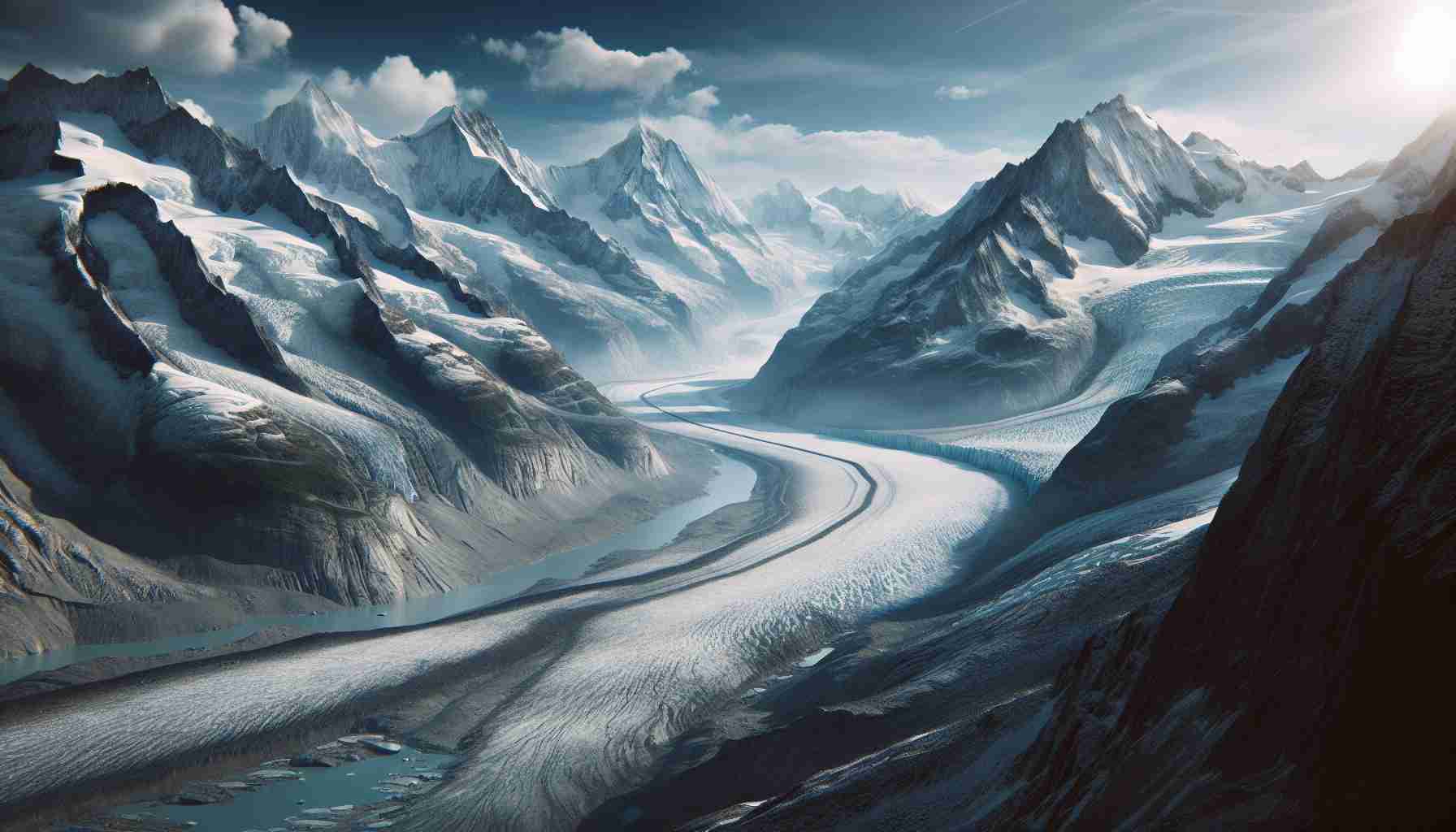Research on climate phenomena using glaciers must be halted in the case of Glacier Corbassière in Valais, Switzerland. Why? Because the climate has changed too much. The majority of our knowledge about Earth’s climate comes from ice. Glaciers trap air bubbles that reveal the concentration of atmospheric gases at the time the ice formed. Oxygen isotopes in water molecules provide clues about temperatures during a specific period. The pollutants trapped in the ice also contain their own information.
All of this is why climatologists travel to Greenland, Antarctica, and mountain peaks to collect ice cores. However, these studies are only possible because ice accumulates in layers each winter. These layers, similar to tree rings, provide information about events in a particular year – if the layers cannot be distinguished, the ice loses its purpose.
Some glaciers record climate data from the past hundreds of thousands of years, but the ice in Corbassière is of much more recent origin. Near the summit, it consists of firn, which is the stage of snow transforming into ice. On average, 2 meters of firn from each year between 2011 and 2018 can be observed in Corbassière, allowing for much higher resolution than in most other locations.
Pollution in the form of ammonia, nitrates, and sulfur is carried to the Alps by summer winds and deposited on glaciers, such as Corbassière. In colder winter air, the particles no longer reach such high altitudes, causing the concentration to decrease.
Examining a 14-meter core collected in 2018, doctoral student Carla Huber from the Swiss Paul Scherrer Institute and professor Margit Schwikowski noticed remarkably detailed data from the past seven years. However, an 18-meter core collected in 2020 brought completely different results with lower concentrations and significantly less seasonal variability.
Schwikowski and Huber concluded that the recent years have been so hot that the glacier has melted deeply, even affecting the layers hidden beneath meters of firn. Sediments from different seasons have mixed, resulting in flattened data. Additionally, some of the meltwater has drained away, causing cracks in the glacier to reach the bottom. “It turns out that the water didn’t freeze there, and the concentrated substances were literally washed away,” Schwikowski said in a statement. “We compare this process to breaking into a library, where fragments of different books mix together, and some are completely stolen.”
This fact would be sufficiently concerning for the future if Grand Combin, from which the glacier flows, had experienced some strange random event. However, the nearest meteorological stations indicate that this has not happened. Instead, the temperature has risen in line with the global average.
“Based on this, we conclude that there was not one trigger for this intense melting, but it resulted from many warm years lately,” Schwikowski said. “It seems that a threshold has been crossed, leading to a relatively strong effect.”
This is another example of how climate change surprises even those who have been studying it for decades, and rarely in a favorable way. “For a long time, we knew that glacier tongues were retreating. But we didn’t realize that the accumulation areas of high-altitude glaciers would be equally affected – that is, their highest parts where the glacial mass is formed,” Schwikowski said.
Schwikowski is part of the Glacier Memory Foundation project, which aims to collect cores from 20 endangered glaciers before they completely melt and store them in a global climate archive. Corbassière was supposed to be one of them. The 2018 core can still be included, but Schwikowski says that most of the 2020 core is now useless. The transition between hard and soft layers, caused by melting and refreezing, has almost destroyed the very expensive drill. Plans to drill much deeper to gather data from millennia have been abandoned.
“At Grand Combin, we are already too late,” Schwikowski said.
There is a possibility that nearby glaciers could take Corbassière’s place in the archive, but since most alpine glaciers begin at lower altitudes, the rest could be similarly affected.
The dramatic retreat of many glaciers has become a symbol and a warning of climate change worldwide – but even where the effects are not visible to the naked eye, the consequences can be serious.
“The threat of losing glacier-preserved information is a huge challenge for the scientific community, as it represents one of the best records of past climate and environmental changes,” notes the article about this situation.
The research has been published under open access in the journal Nature Geoscience.
FAQ Section
The source of the article is from the blog agogs.sk
